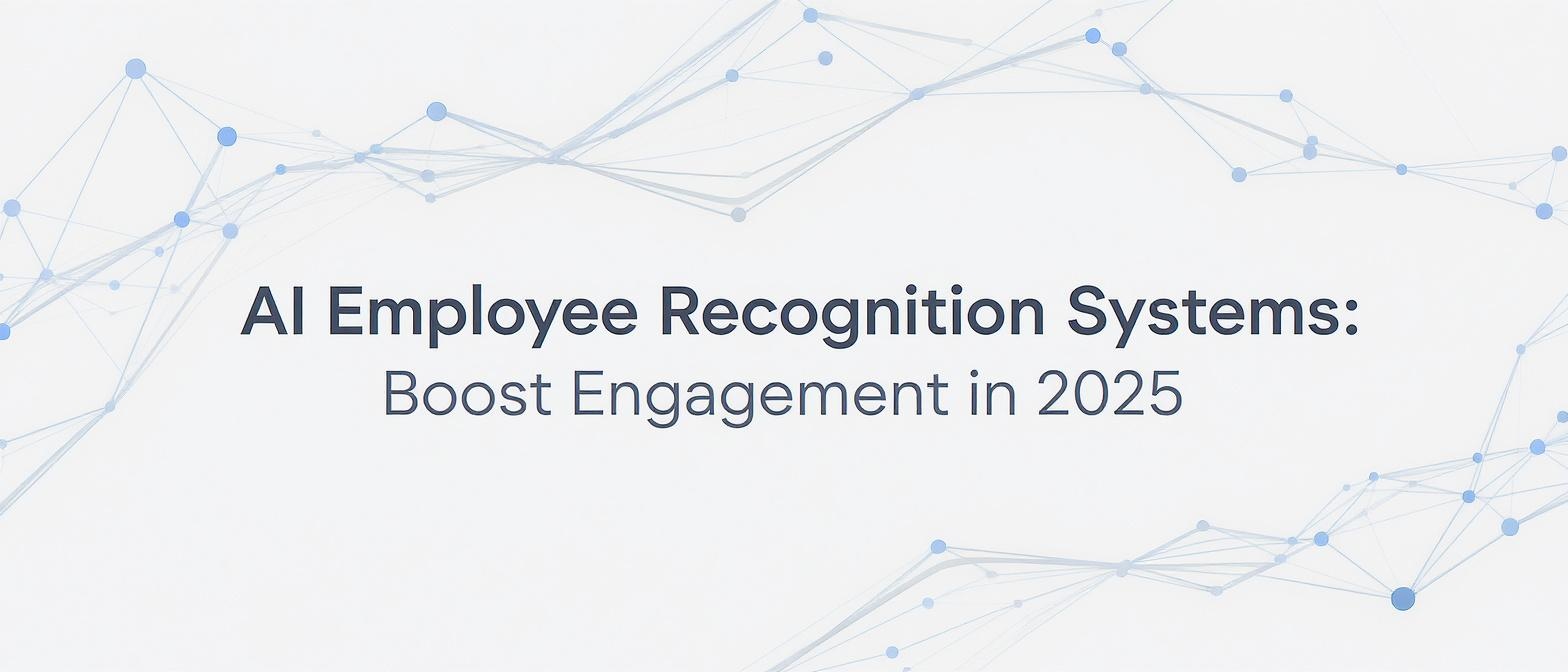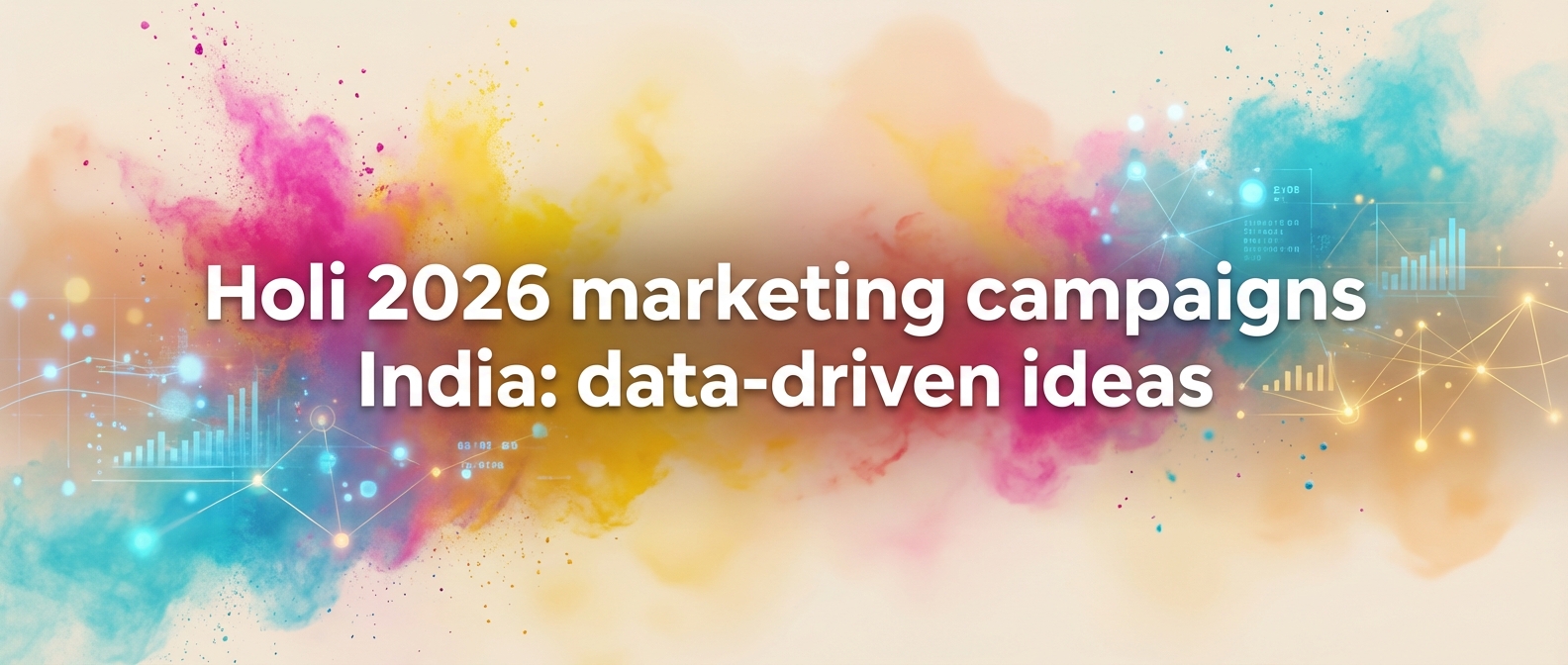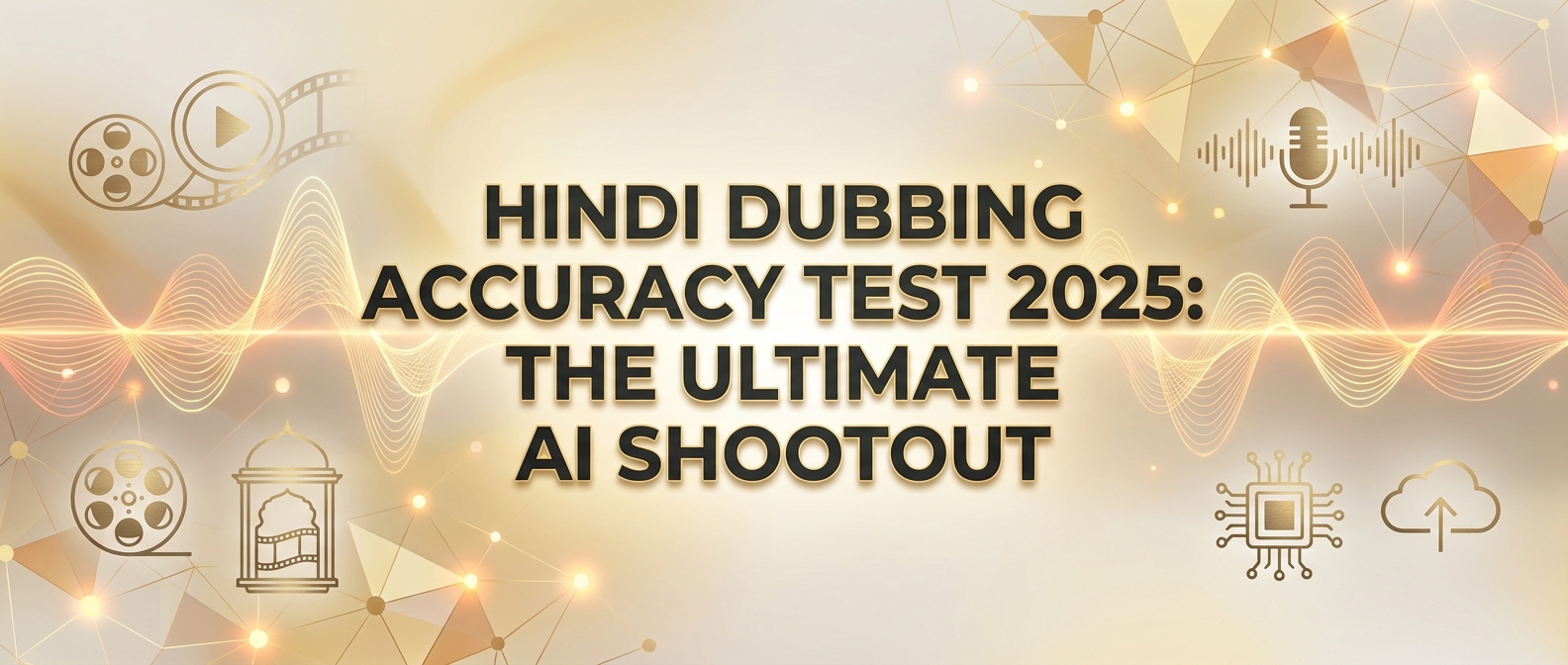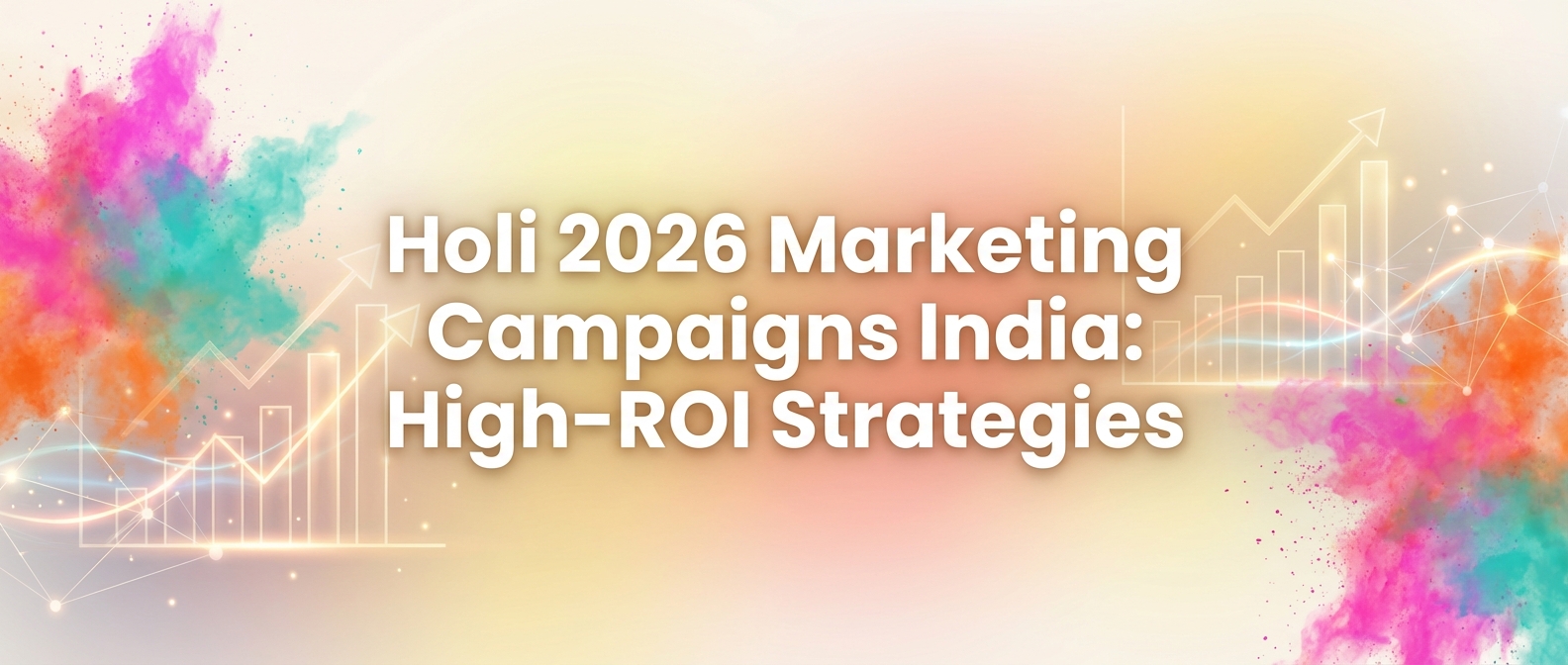Transforming Year-End 2025 Workforce Engagement with AI Employee Recognition Systems
Estimated reading time: 15 minutes
Key Takeaways
- AI-driven recognition programs can boost engagement and reduce burnout across distributed teams.
- Automated, hyper-personalized video messages create memorable employee milestones.
- Data analytics from AI tools tie recognition activities to measurable business KPIs.
- Fostering a culture of continuous appreciation is crucial for year-end 2025 success.
I. Introduction: The New Frontier of Employee Appreciation
The strategic importance of Human Resources has never been more pronounced. As we look toward year-end 2025, the proliferation of hybrid and remote work models has fundamentally reshaped the corporate landscape, demanding more sophisticated tools for fostering connection and motivation. In this new era, AI employee recognition systems are emerging as a cornerstone of modern HR strategy. The goal is no longer just to acknowledge effort but to do so with precision, scale, and genuine emotional resonance, directly impacting corporate culture building.
According to Halo’s 2025 trends report, “AI employee recognition systems are projected to be transformational forces in scalable, personalized appreciation programs.” This shift is not merely technological; it is a strategic response to the need for more agile and impactful workforce engagement automation. For HR Directors and Internal Communications teams, the challenge is clear: how to make every employee, regardless of their location, feel seen, valued, and connected to the organization's mission, especially during the crucial year-end period.
This guide is designed to provide a comprehensive roadmap for navigating this transformation. We will explore the technical underpinnings of these systems, dissect key implementation strategies, and showcase real-world applications that demonstrate their power. Our objective is to equip you with the knowledge to implement scalable, AI-driven recognition programs that not only celebrate achievements but also build a more resilient and engaged workforce for 2025 and beyond.
Source: halo.com/2025-employee-recognition-trends
II. What Are AI Employee Recognition Systems? Redefining Appreciation with Technology
At its core, an AI employee recognition system is a sophisticated engine powered by machine learning (ML), natural language processing (NLP), and advanced data analytics. It is designed to automatically identify, personalize, and deliver moments of recognition in real time. These platforms move beyond the traditional, often sporadic, “employee of the month” model to create a continuous and dynamic culture of appreciation.
These systems work by ingesting and interpreting a wide array of data points. This allows them to surface high-impact appreciation opportunities that would be impossible for managers to track manually, effectively “re-humanizing” recognition by ensuring it is timely and contextually relevant. By automating the logistical aspects, they empower leaders to focus on the human element: the follow-up conversations and deeper connections that truly motivate.
Let’s break down the technical components:
- Data Inputs: The system constantly analyzes data from multiple sources. This can include quantitative performance metrics from HRIS platforms, peer-to-peer nominations submitted through collaboration tools, project completion data from platforms like Jira or Asana, and even sentiment analysis from communication channels like Slack or Microsoft Teams.
- Processing Engine: Once data is collected, the AI gets to work. NLP algorithms analyze the tone and sentiment of written feedback to understand its emotional weight. Machine learning models then rank potential “recognition triggers”—such as a colleague receiving overwhelmingly positive feedback or an engineer closing a critical bug—to prioritize the most meaningful moments. A rules engine then governs the timing and format of the recognition delivery.
- Intelligent Outputs: The final step is the delivery of personalized recognition. The system can generate automated emails, personalized video messages, or posts on internal social channels. These outputs use dynamic fields to insert the employee’s name, role, specific achievement, and even quotes from peer feedback, ensuring each message feels unique and personal.
The ultimate role of these systems is to build a high-frequency, high-impact recognition ecosystem. They ensure that positive contributions, both large and small, are consistently acknowledged, reinforcing desired behaviors and strengthening the emotional contract between employee and employer.
Source: octanner.com/press/oc-tanner-releases-2025-state-of-employee-recognition
Source: techrseries.com/featured/engineering-emotional-intelligence
III. Key Trends Shaping Scalable Internal Communication in 2025
The evolution of AI is rapidly shaping the future of workforce engagement. For 2025, several key trends are defining how organizations will leverage AI-powered recognition to build stronger, more connected teams. These trends move beyond simple automation and point toward a more intelligent, proactive, and data-centric approach.
1. Agentic AI & Ambient Intelligence
The next wave of AI is not just responsive; it’s proactive. Agentic AI systems act as “invisible helpers” for managers. By 2025, we will see these systems proactively suggesting recognition opportunities (“It looks like Sarah’s team just hit a major project milestone. Would you like to send a note?”), auto-drafting personalized messages based on performance data, and nudging leaders who may have overlooked a team member’s contribution. This “ambient intelligence” ensures recognition is consistent without adding to managerial workload.
2. Unprecedented Scalability and Global Reach
As businesses become more global and distributed, recognition programs must scale effortlessly. Modern AI platforms are cloud-native by design, capable of processing millions of recognition triggers per day across different time zones, languages, and cultural contexts. This ensures a consistent employee experience, whether the team member is in the head office, a satellite branch, or a home office on the other side of the world. Platforms like TrueFan AI enable this by generating customized content that can be localized and distributed instantly. (https://www.truefan.ai/blogs/multilingual-personalized-video-campaigns)
3. The Rise of Human-AI Collaboration
A common misconception is that AI aims to replace the human element of recognition. The 2025 trend is definitively one of collaboration. AI handles the heavy lifting—data analysis, opportunity identification, and content generation. This frees up leaders and HR professionals to focus on high-value, uniquely human tasks: delivering the recognition in a personal town hall, having a meaningful follow-up conversation, or crafting a handwritten note to accompany an AI-generated award. The AI manages the “what” and “when,” so humans can perfect the “how.”
4. Data-Driven Insights for Strategic HR
Modern recognition platforms are also powerful analytics tools. By 2025, HR leaders will increasingly rely on dashboards that visualize recognition data in real-time. These insights can measure the frequency of recognition across departments, track the sentiment lift following an appreciation campaign, and—most critically—draw direct correlations between recognition activities and key business metrics like employee retention, productivity, and engagement scores. This data transforms recognition from a “nice-to-have” initiative into a measurable driver of business success.
Source: simpplr.com/blog/2025/ai-digital-employee-experience-trends
IV. Implementing AI-Based Appreciation Programs
Translating the potential of AI into a tangible program requires a clear understanding of the available tools and technologies. Two of the most powerful applications are automated videos and deep platform integrations, which together can create hyper-personalized recognition at an enterprise scale.
A. Automated Employee Appreciation Videos: Recognition at Scale
Automated employee appreciation videos are one of the most compelling use cases for AI in HR. These are dynamically generated, templated video messages that are automatically populated with employee-specific details like their name, tenure, project achievements, or a direct quote from their manager.
The technical workflow for this scalable internal communication tool is remarkably efficient:
- Data Ingestion: The process begins with a data feed from the company’s HRIS or CRM system. This can be a simple CSV file or a real-time API connection that provides the necessary personalization fields (e.g., FirstName, AnniversaryDate, ProjectName, ManagerQuote).
- Template Creation: The creative team designs a base video template. This template includes designated placeholders for text, images, and other dynamic elements, ensuring brand consistency across all generated videos.
- AI-Powered Rendering: This is where the magic happens. The AI engine merges the data with the template. Using advanced technologies like face reanimation and voice cloning, it can even feature a CEO or celebrity spokesperson appearing to speak directly to the employee, using their name and referencing their specific accomplishment. (https://www.truefan.ai/blogs/video-personalization-api-guide)
- Instantaneous Delivery: Once rendered—often in under 30 seconds—the personalized video is automatically delivered to the employee through their preferred channel, whether it’s email, WhatsApp, or a push notification from the company app.
The benefits of this approach are transformative. It allows for hyper-scalable campaigns, delivering thousands or even millions of unique videos without manual effort. It guarantees brand and compliance control through the use of templates and provides a consistent, high-quality experience for every employee.
B. TrueFan Enterprise Integration: Deepening Personalization
For enterprises seeking to unlock the full potential of AI employee recognition systems, deep API integration is the next logical step. This is where specialized platforms come into play, offering advanced capabilities that go far beyond simple template-filling.
TrueFan AI’s 175+ language support and Personalised Celebrity Videos, for example, showcase the power of a dedicated generative AI engine. Key features accessible through enterprise integration include:
- Hyper-Personalization at Scale: By ingesting comprehensive employee metadata, the platform can generate millions of truly unique videos. A message can be tailored not just with a name, but with location-specific context (e.g., “Hi Raj, congratulations on 5 years with our team in Bengaluru!”), creating a profound sense of individual recognition.
- Virtual Reshoots: A groundbreaking capability is the “virtual reshoot.” If year-end messaging needs to be updated or a new company value emphasized, the AI can alter the speech and lip movements of the person in the video without requiring the talent to re-record anything. This allows for seamless A/B testing of different messages and incredible agility in campaign management.
- Multilingual Support: For global organizations, the ability to deliver recognition in an employee’s native language is crucial for inclusivity. Advanced AI can generate videos in over 175 languages, retaining the original speaker’s voice and ensuring perfect, natural-looking lip-sync.
- Seamless API Integration: The entire process is automated through API calls. A simple POST request containing personalization data can trigger the video creation process. A sample payload might look like this:
{
"vendor_id": 5,
"template_id": 101,
"order_id": "EMP-ANNIV-12345",
"data": {
"text_data": {
"p1_text": "Priya Sharma",
"p2_text": "5 Year Anniversary"
},
"image_data": {
"p1_image": "https://url.to/priyas/photo.jpg"
}
},
"webhook_url": "https://your.company/recognition/webhook"
}
Upon successful creation, the system can send a notification to a designated webhook, allowing for real-time tracking and integration into broader employee loyalty programs and internal communication workflows.
V. Personalized Employee Awards & Milestone Celebrations
While automation provides scale, personalization delivers the emotional impact that truly drives engagement. AI-powered systems excel at combining these two elements, transforming generic milestone acknowledgements into memorable, personalized employee awards and celebrations.
Personalized awards are dynamic digital assets—such as certificates, badges, or even virtual trophies embedded within videos—(https://www.truefan.ai/case-study/case-study-zomato-restaurant-awards) that are customized with an employee’s name, role, and a specific description of their achievement. These are no longer static templates but living documents of an individual’s contribution to the company. This approach is critical for effective corporate culture building, as it visibly ties individual actions to company values.
The system can be triggered by a wide range of milestones, including:
- Work Anniversaries: Celebrating an employee’s tenure with a video message from their manager or the CEO.
- Birthdays: A simple but powerful way to make an employee feel valued on a personal level.
- Project Launches: Recognizing the entire team that contributed to a successful product release.
- Certifications and Skill Development: Acknowledging an employee’s commitment to personal growth and learning.
The emotional resonance of this strategy cannot be overstated. Research from O.C. Tanner’s 2025 Global Culture Report reveals a staggering insight: recognition is 12 times more likely to drive engagement when it is personalized. When an employee receives a message that speaks directly to their unique journey and contribution, it validates their effort in a way that generic praise never can.
Crafting the messaging for these moments is key. AI can help generate scripts that feel authentic and heartfelt. For example:
- For a project milestone: “Dear Priya, on behalf of the entire leadership team, I want to personally thank you for leading the Mumbai launch. Your creativity and dedication were the driving force that made us shine!”
- For a work anniversary: “Happy 3-year anniversary, Amit! Your growth with us has been incredible to watch. Here’s to many more years of success together.”
By automating the creation and delivery of these personalized employee awards and milestone celebrations, organizations can ensure that no achievement goes unnoticed, fostering a culture where every team member feels like a valued contributor.
Source: octanner.com/global-culture-report
VI. HR Video Personalization & Internal Marketing Automation
The principles of personalization extend far beyond awards and anniversaries. HR video personalization involves creating one-to-one video communications where each employee sees content and data relevant specifically to them. This transforms standard internal marketing automation into a powerful tool for building loyalty and reinforcing a positive employee experience.
The workflow for this level of personalization is a closed-loop, data-driven process:
- Automated Trigger: The process begins when a milestone event is recorded in the company’s HRIS. This could be a promotion, the completion of a training module, or even a positive quarterly performance review.
- Template Selection & Data Merge: The system automatically selects the appropriate video template for the event. It then merges the employee’s specific data—their name, new title, skills learned, etc.—into the template.
- AI Rendering & Distribution: The AI engine renders the unique video and distributes it through the employee’s designated communication channel, such as email or an internal messaging app.
- Analytics & Follow-up: The system tracks engagement metrics for each video (e.g., view rates, completion rates). This data can be used to refine future communications and trigger follow-up actions, such as a manager being prompted to schedule a celebratory coffee chat.
This highly personalized approach has a direct and measurable impact on key HR metrics. A recent article from People Matters on agentic AI highlights how this technology is reshaping employee well-being and recognition by creating more empathetic and responsive digital experiences. When recognition is frequent, personalized, and seamlessly integrated into the daily workflow, it becomes a powerful antidote to burnout.
In fact, the benefits are stark. O.C. Tanner’s research finds that employees experience 84% lower burnout when they receive frequent and personalized recognition. By automating the delivery of these meaningful touchpoints, organizations can significantly improve employee loyalty and reduce costly turnover, solidifying their status as an employer of choice. Solutions like TrueFan AI demonstrate ROI through enhanced engagement metrics and reduced attrition rates, making a clear business case for investment in such technologies.
Source: peoplematters.in/article/ai-and-emerging-tech
Source: octanner.com/press/2025-state-of-employee-recognition-report
VII. Real-World Applications & Case Studies of Workforce Engagement Automation
The theoretical benefits of AI employee recognition systems are compelling, but their true power is revealed through real-world application. Leading companies are already leveraging this technology to execute massive, hyper-personalized campaigns that drive unprecedented engagement.
Here are a few standout examples that showcase the scale and impact of this technology:
- Zomato’s Mother’s Day Campaign: In a remarkable display of scale, the food delivery giant generated 354,000 unique videos in a single day. Each video featured a celebrity wishing a user’s mother a “Happy Mother’s Day” by name, often in a regional language. This campaign not only drove record order volumes but also created immense brand love and social media buzz. (https://www.truefan.ai/case-study/case-study-zomato-mothers-day)
- Goibibo’s Personalized Travel Nudges: The travel portal used AI-generated videos featuring cricketer Rishabh Pant to re-engage users. The videos dynamically included the user’s name and the travel destination they had recently searched for, along with a special discount. This hyper-relevant nudge significantly boosted conversion rates and social sharing.
- Hero MotoCorp’s Festive Wishes: To connect with its vast customer base, the motorcycle manufacturer created 2.4 million personalized video greetings for the festive season. The videos featured celebrities addressing customers by name, resulting in a measurable increase in dealership visits and service appointments.
- Cipla’s Doctor’s Day Appreciation: Demonstrating powerful B2B application, the pharmaceutical company sent personalized thank-you videos to 6,400 doctors. Each video featured a celebrity addressing the doctor by name and acknowledging their specific location, strengthening professional relationships in a highly memorable way.
These campaigns delivered staggering metrics that underscore the ROI of this approach. Beyond view-through rates and conversion lifts, the efficiency gains are enormous. One key statistic reveals that these AI-driven campaigns saved a collective 3,888 creative hours that would have otherwise been spent on manual video editing and production. This is workforce engagement automation at its most effective, freeing up creative teams to focus on strategy while the AI handles execution at a scale previously unimaginable.
VIII. Conclusion: The Future of Recognition is Personal, Scalable, and Smart
As we approach year-end 2025, the mandate for HR and Internal Communications leaders is clear: to build a culture of recognition that is as agile, distributed, and dynamic as the modern workforce itself. AI employee recognition systems are no longer a futuristic concept but a present-day necessity for achieving this goal. They offer a transformative solution that is simultaneously scalable, deeply personalized, data-driven, and emotionally resonant.
By automating the identification and delivery of recognition moments, these platforms empower organizations to celebrate achievements consistently and meaningfully, ensuring no employee’s contribution goes unnoticed. The ability to generate millions of unique, multilingual video messages at the push of a button dismantles the traditional barriers of time, language, and geography. This technology allows you to build a truly global culture of appreciation.
For HR Directors and Internal Communications teams looking to pilot a next-generation recognition program, the time to act is now. We encourage you to explore AI-powered video workflows and integrated recognition platforms. By embracing these tools, you can not only enhance your year-end engagement initiatives but also lay the foundation for stronger employee loyalty programs and a more vibrant corporate culture in the years to come.
Ready to see how hyper-personalized recognition can transform your workforce engagement? Download TrueFan’s enterprise integration guide or schedule a demo today.
Frequently Asked Questions
1. Will AI replace the human element in employee recognition?
Not at all. The goal of AI is to augment, not replace, human interaction. AI handles the data analysis and automates the delivery of recognition at scale, which frees up managers and HR professionals to focus on the high-impact, personal follow-ups—like in-person congratulations and meaningful career conversations—that build strong relationships.
2. How secure is the employee data used in these AI systems?
Leading platforms prioritize data security and are typically compliant with rigorous standards like ISO 27001 and SOC 2. Data from your HRIS is used solely for the purpose of generating personalized content and is processed under strict security protocols. Always verify the security certifications of any vendor you consider.
3. What kind of ROI can we expect from implementing AI employee recognition systems?
The ROI is multifaceted. Quantitatively, companies see improvements in retention rates, a reduction in employee burnout, and higher engagement scores. Case studies have shown direct lifts in conversions and participation in company initiatives. Qualitatively, these systems foster a stronger, more positive corporate culture, which is invaluable.
4. How difficult is it to integrate an AI recognition platform with our existing HRIS?
Modern platforms are designed for seamless integration. Most offer robust API documentation and support connections with major HRIS and CRM systems. The integration process typically involves mapping data fields and setting up triggers, a process that can often be completed with minimal IT resources. Platforms like TrueFan AI provide comprehensive support to ensure a smooth enterprise integration.
5. Can these systems work for a non-technical, global workforce?
Absolutely. The end-user experience is incredibly simple. Employees receive personalized videos or messages directly via familiar channels like email or WhatsApp, requiring no special training. With advanced multilingual capabilities, content can be delivered in an employee’s native language, ensuring the message is inclusive and resonates globally.




